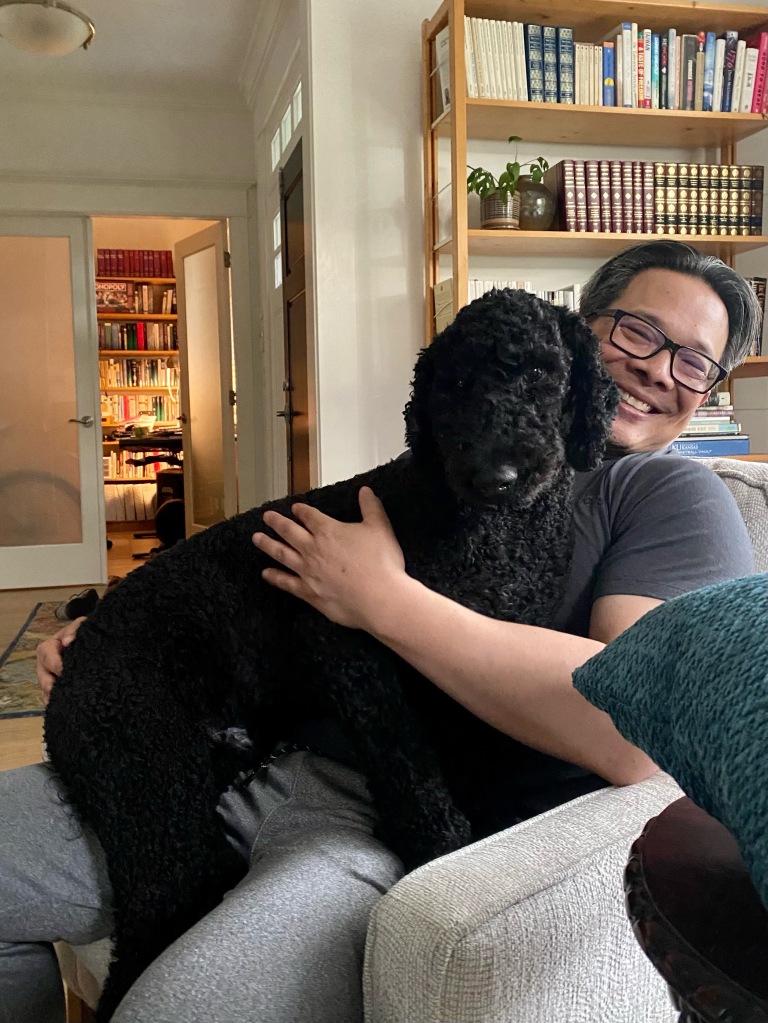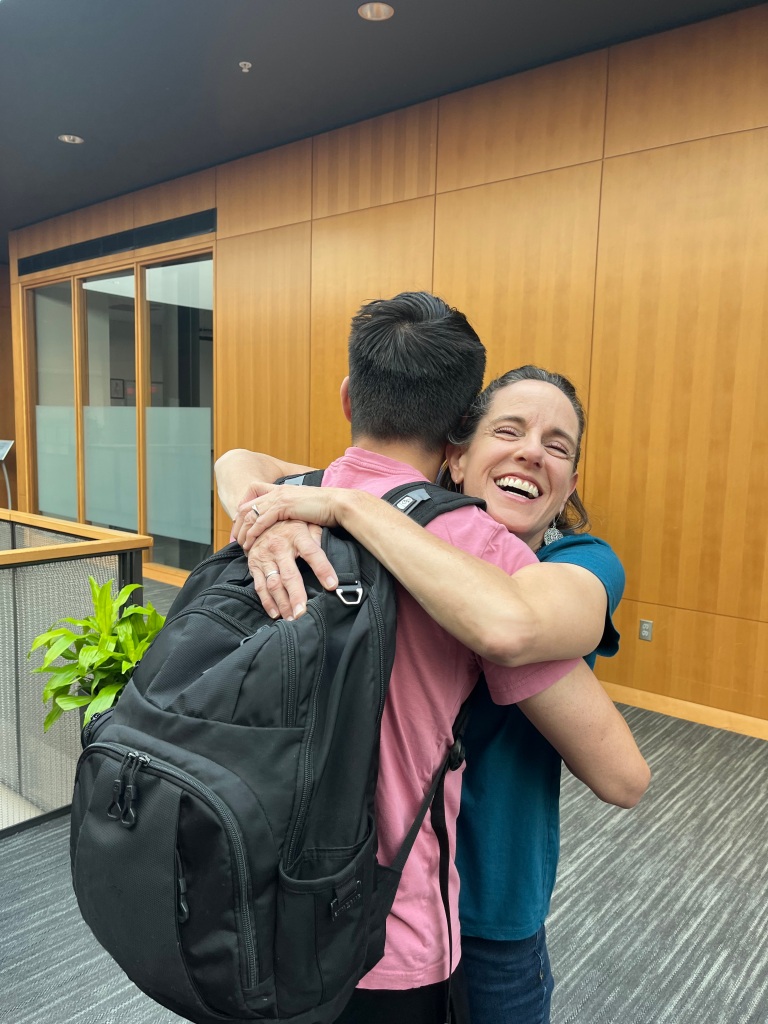
The first day in Germany, while we flew into Frankfurt, we immediately took the long train ride to Berlin. After a nine-hour flight, having our days and nights turned around, that was a tough train ride. We were ready to get to our place of residence. Nonetheless, we greatly enjoyed starting our trip off in Berlin. Another mild point of regret was that because the trip to Germany was something of a last minute pivot from Israel, we didn’t get to do very much reading ahead of time to understand all the historic sites we would be seeing. The first day we saw the Brandenburg Gate, but I would not fully recognize the historic significance of the site, especially in recent history. Pictured above is the view of the Brandenburg Gate from what was once East Germany, a picture taken by Greg. The gate was located in “no man’s land” between East and West, from 1961 until 1989 when the Berlin Wall would come down. Here is a picture I found online of a similar view from inside East Germany, from 1984:

In the picture, you can see the barricade that kept East Berliners from being able to approach the Gate, but where they could only see it from a distance. And then here is another picture of the Berlin Wall being constructed in 1961 in front of the Gate (on the west side of the Gate):

And then here is a fairly iconic picture from 1989, just when the wall in front of the Brandenburg Gate was on the verge of coming down (again, the wall was situated on the west side of the Gate):

Oh, had I only known exactly what I was looking at when I walked through the Gate, but alas, now I know! And I only wish to return again to Germany in the future to see this location again!
Following World War II, Germany was split up into four occupation zones, each one controlled by one of four Allied powers: France, the United Kingdom, the United States and the Soviet Union. The famous location of access between East and West, not too far from the Brandenburg Gate, is known by the name Checkpoint Charlie as named by Western Allies, a checkpoint controlled by the US and Allied Armies. Checkpoint Charlie became a symbol of the Cold War, and American and Soviet tanks even faced off briefly in 1961. Below is a picture I was able to take of the famous checkpoint, which as of today looks like a normal intersection, with something of a historic marker, but from 1961-1989, was a huge divide where only those with special permission and documentation could cross.

While the actual wall would take a while to build, in less than 24 hours through the night of August 12th, 1961, into the morning hours of August 13th, barriers were erected around West Berlin by the Soviet-controlled East Berlin government. Families were divided, and only upon threat of death, would crossing the border between East and West be attempted. The main concern on the part of the East Berlin government as well as its occupying force the Soviet Union, was the massive number of defections from East to West, resulting in a significant loss of workers for the East. Following the war, in about a ten-year period, East Germany went from about 70% of its population being of working age, to 60%. A large part of the defections were among professionals: engineers, physicians, teachers, lawyers, and skilled workers. These losses led to East German party leader Walter Ulbricht claiming West Germany owed East Germany $17 billion in compensation, including reparations as well as manpower losses. So the wall would be erected and a zone would be created between East and West, crossing only at the risk of one’s own life, even if to see family members. Even more so, the wall became a symbol of the Cold War and its great divide between East and West on a global scale, prior to 1989. Greg, Chad and I were able to see this part of the Berlin Wall that remained erected in pieces, to commemorate the history. These pieces are set in the famous “Potsdamer Platz” which is the largest building site in Europe and what became a place of reunification between East and West Berlin in one city square, once upon a time a place of division.

Well, if I had been able to do this research before the trip, how great would that have been? But alas, it was great to learn more of this history upon returning.


Leave a comment